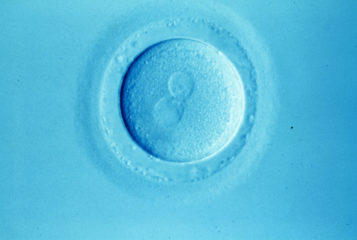The novel coronavirus (SARS-CoV-2) has spread rapidly, and the world has had to respond swiftly to contain it. Anyone reading and listening to the news will be aware that the situation is dynamic, with projections changing accordingly. Key to containment is a global effort with widespread changes led by governments. There is ample information about how the medical community across the globe is responding in trying to cope and save lives.
Containment and being prepared are cornerstones of dealing with a major medical threat. We resort to measures which have worked before, whilst accepting and preparing for unknowns. The knowledge of the nature of the virus, its effect and its resolution, will evolve with time. Therefore, plans are made in terms of immediate response, medium and long-term preparation and a great deal of research with the aim of understanding the virus and finding a vaccine to protect the population in the future.
Containment has involved social distancing, self-isolation, quarantine and lockdown – all of which have now become well-known terms. Preparation has involved mobilising hospital space, resources and staff to stay ahead of the game. Therefore, significant changes have been made to where and how medical staff work. All branches of medicine have been affected as a result of these changes. All elective surgical procedures have been postponed and operating theatres and recovery areas converted to intensive care wards. Patients have been advised to avoid non-urgent travel and in keeping with this advice all clinical work which is amenable to telephone or video consultations has been converted as such. Interruption to usual modes of care delivery is bound to cause difficulty and anxiety among patients and care providers alike. As fertility care is an elective activity, it has been temporarily paused. The reason elective clinical activity needs to be stopped (or reduced significantly) is to allow the re-modelling of space and staff deployment to cover the additional wards and intensive care units created for care and treatment of patients with COVID-19.
In the UK, all sub-specialist societies fulfilled their responsibility by producing guidance that facilitated safety, social distancing and a lockdown as well as how to offer care during this time. The British Fertility Society presented guidelines which is in line with all major fertility societies across the globe. As the virus is novel, the full understanding of how it will affect pregnancy is still very much in the early phases, although the data so far has been reassuring for pregnant women.
It goes without saying that cessation of fertility treatments comes as a big disappointment to individuals and couples who were poised to commence treatment or who had been waiting for treatment. The decision to stop treatment was a very difficult one. We caregivers accompany our patients in their journeys. Their disappointments are our disappointments. Their desired outcomes are also ours.
We clinicians quickly have had to adapt to new ways of working. Front-line workers in intensive care units, anaesthesiology and respiratory medicine have had a huge task on their hands. We watch with admiration how they plunge in with calmness, empathy and scientific rigour. In a rapidly-evolving, ever-changing scenario, adjustments are continual.
While these adjustments continue, our patients and couples display grace, patience and compassion. During our interactions, we are touched by their heart-warming concern for our wellbeing whilst we appreciate how hard it is for them to put their dreams on hold. By containing the spread of the virus now, we hope that we will be able to resume all services and get back to caring for and helping our patients who have been waiting.
There have been several examples of medical professionals working in the private sector coming forward in the time of need to help the NHS. The NHS Trusts are working around the clock to facilitate their offers of help. Coordinating these changes, far removed from the familiar, is a major task. Redeployment has become a familiar word. Doctors and nurses are having to adapt quickly to working in unfamiliar environments. Whilst this is challenging, medical staff have also found fulfilment in rising to the occasion.
To give an example of re-deployment, orthodontists are working in obstetrics assisting obstetricians to deliver babies, while obstetricians, in turn, are working in intensive care. Two orthodontists, Kate Taylor and Priti Acharya had this to say about their experience:
'As specialist orthodontists, we fully expected to be redeployed to help our medical colleagues save lives. Whilst it initially felt daunting to work in a new specialty, we learn so much every day and hope we are making a difference in this collective fight by supporting our medical peers.'
Despite the challenging and tragic times, we are witnessing so many instances of exemplary humanity.
My own experience matched those of doctors Taylor and Acharya. We are united in our wish to support one another and combat this adversity. It was with some apprehension that I recently ventured into the Intensive Care Unit (ICU). I worried about my ability to assist meaningfully and not get in the way. But my anxiety was soon allayed. The hospital had already introduced lots of learning content and training sessions, of which I took advantage. The doctors and nurses in ICU made additional efforts to teach newcomers so that we were able to contribute. Following the handover process (when the outgoing medical team updates and 'hands over' care of patients at the end of a shift to the incoming team), the patients and their stories are in-the-making. Lives put in jeopardy suddenly. A whoop of joy when someone gets better. Collective gloom when they deteriorate. Yet the team soldiers on. There is work to do; lives to save. Today is another day.



Leave a Reply
You must be logged in to post a comment.